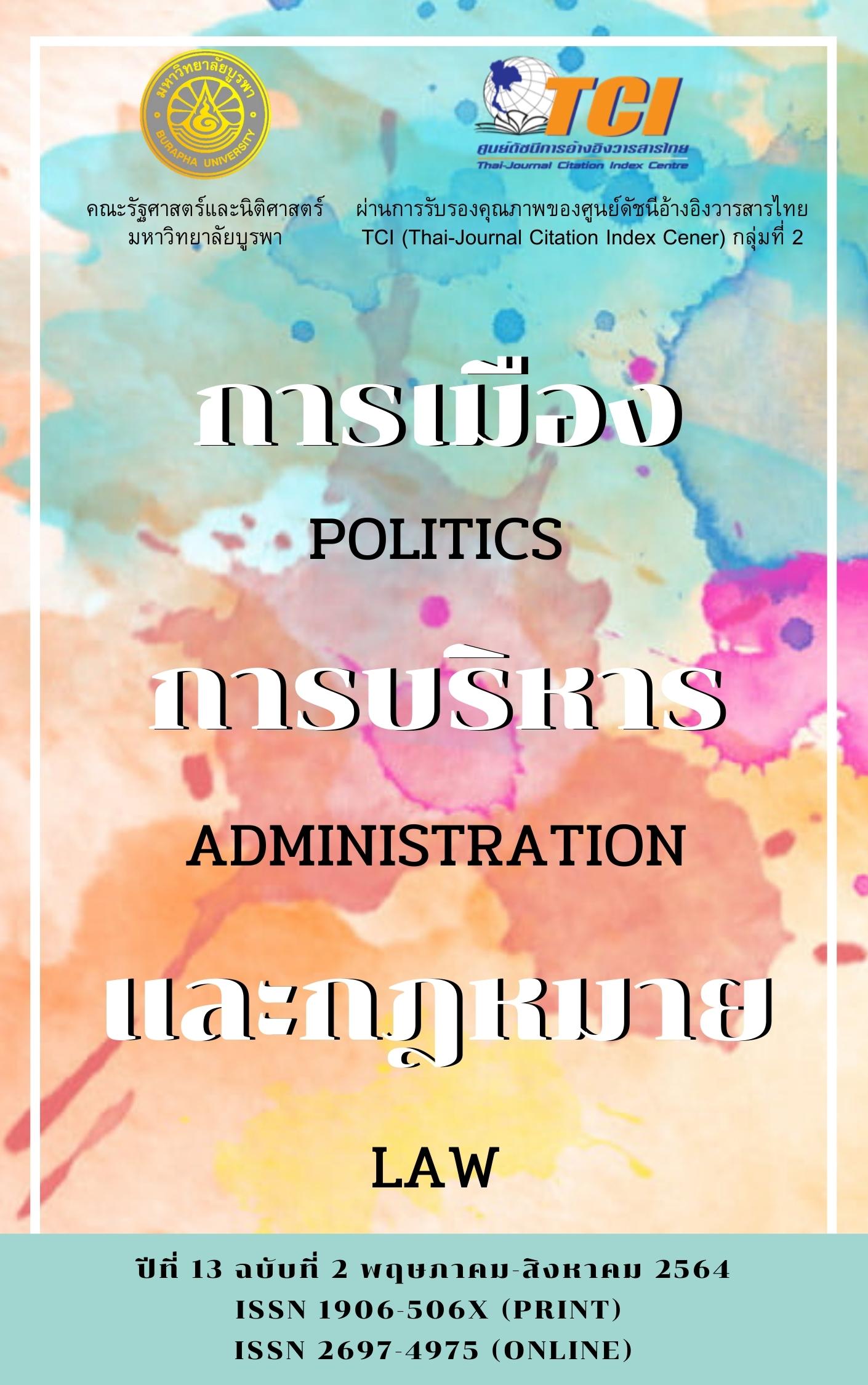Patters for Preserving Agricultural Occupations in Communities That Exist Within the Industrialized Environment, Using the Philosophy of Sufficiency Economy
Keywords:
Patters for preserving agricultural occupations, Communities, The philosophy of sufficiency economy, The industrialized environmentAbstract
This research project aims to present a guideline for agricultural occupation development that integrates the entire value chain of communities that exist within the industrialized environment: a case study of Nong Ri Subdistrict, Mueang Chon Buri District, Chon Buri Province. The authors design the research and methodology of this project as an action research project. The result reveals that. Summary of the Value Chain System, for further expanding the concept to the industrialized communities, as follows. 1) Upstream activities are, including: 1.1) determining the communities for the research, by studying the communities’ potential and further improvement. 1.2) surveying potential participants for activities. 1.3) training and educating those participants. 1.4) determining the activities and operations. 1.5) determining the regulations and quality standards for production and distribution. 1.6) determining the types and prices of products to produce and distribute. 1.7) determining the market, the date, time, and place of distribution. 2.2) Mid-stream activities are, including: 2.1) agriculturalists produce the products as per the regulations and the market’s demands that have been previously agreed upon. 2.2) determining the products’ quantities and prices under the same standard used by the entire community. 2.3) designing a unique logo of the community, under the brand name “Ruk Kaset Nong Ri”. 2.4) designing and choosing the right packaging for each type of product. 2.5) recording the results of farming, production, and distribution. 2.6) preparing the household account (income-expense). 3) Downstream activities are, including: 3.1) bringing products to distribute at various companies, in accordance with the distribution calendar made by the CSR Department of Amata Industrial Estate; whereas participants still continuously distribute their products through this method. 3.2) acquiring customers’ recommendation, in terms of the products’ quantity, quality, and taste, in order to further improve and develop the products. 3.3) community leaders participate in the meeting where participants present their opinions, obstacles, and solutions. 3.4) adding more channels for ordering that match customers’ demands. 3.5) creating the awareness of the community’s activities and products by conducting public relations activities.
References
กลุ่มนักศึกษาหลักสูตรผู้นำการพัฒนาอย่างยั่งยืนรุ่นที่ 1. (2559). วันที่ค้นข้อมูล 13 มกราคม 2563, เข้าถึงได้จาก https://www.chaipat.or.th/progress-report/899-manager-chaipattana-news/8047-1-1.html
ครรชิต พุทธโกษา. (2554). คู่มือการพัฒนาชุมชนแห่งการเรียนรู้ฉบับสมบูรณ์. กรุงเทพฯ: สำนักงานคณะกรรมการวิจัยแห่งชาติ.
ธเนศ ศรีวิชัยลำพันธ์. (2558). เศรษฐศาสตร์แรงงาน. จังหวัดเชียงใหม่: คณะเศรษฐศาสตร์ มหาวิทยาลัยเชียงใหม่.
มูลนิธิชัยพัฒนา. (2560). ปรัชญาของเศรษฐกิจพอเพียง. วันที่ค้นข้อมูล 31 มกราคม 2563, เข้าถึงได้จาก
https://www.chaipat.or.th/site_content/item/3579-2010-10-08-05-24-39.html
ลลิต ถนอมสิงห์. (2553). ความเป็นมามูลนิธิชัยพัฒนา. วันที่ค้นข้อมูล 13 มกราคม 2563, เข้าถึงได้จาก
https://www.chaipat.or.th/about-the-chai-pattana-foundation/about-us.html
Emery, M., & Purser, R. (1996). The Search Conference: A Powerful Method for Planning Organizational Change and Community Action. Hoboken, NJ: Jossey-Bass.
Holloway, I. W. (2010). Qualitative research in nursing and health care (3rd ed.). India: Laserwords Privates.
Morse, J. M. (1994). Designing funded qualitative research. In N. K. Denzin & Y. S. Lincoln (Eds.), Handbook of qualitative research (pp. 220–235). Thousand Oaks, CA: Sage Publications, Inc.
Downloads
Published
Issue
Section
License

This work is licensed under a Creative Commons Attribution-NonCommercial-NoDerivatives 4.0 International License.






